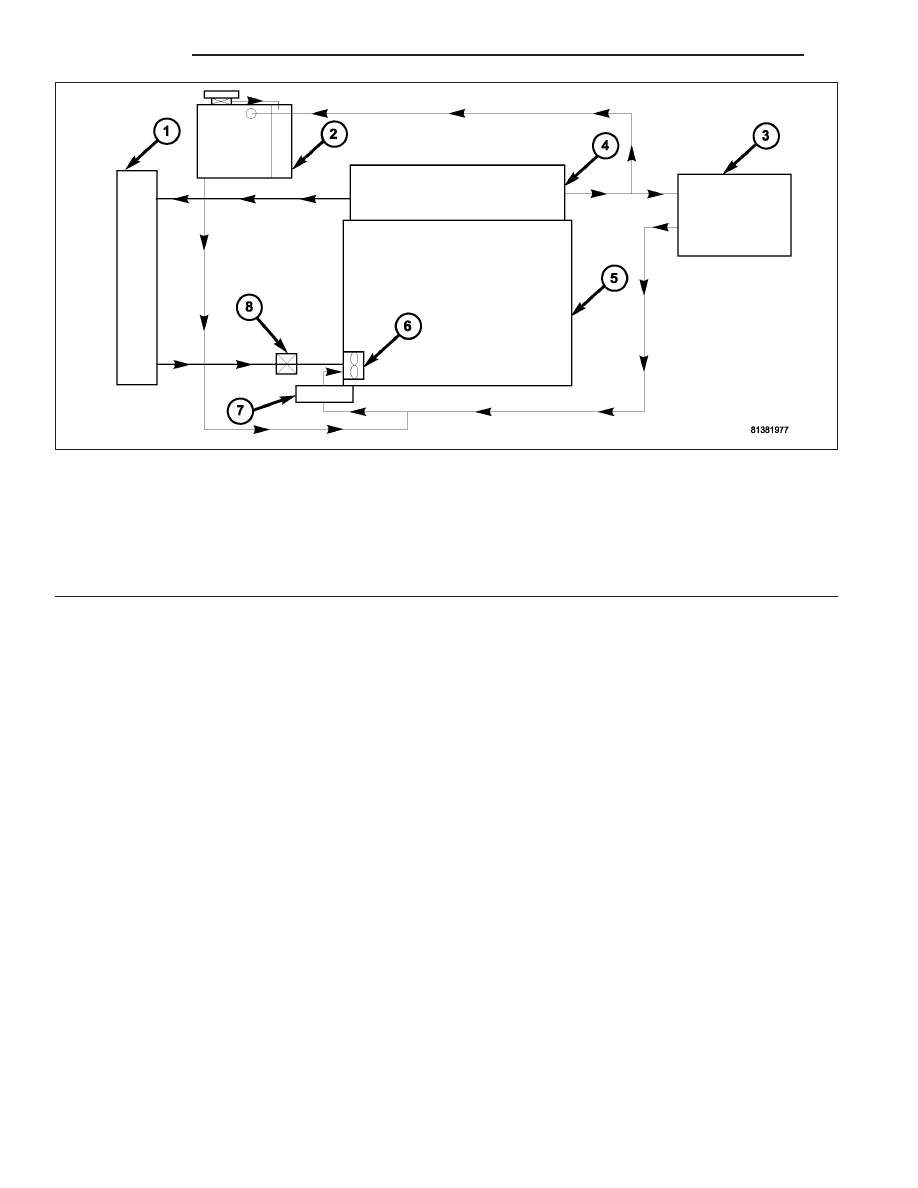Chrysler 300/300 Touring/300C, Dodge Magnum. Manual - part 250

COOLING FLOW - 3.5L W/ENGINE OIL COOLER ENGINE
1 - RADIATOR
2 - HOT BOTTLE/COOLANT RECOVERY BOTTLE
3 - HEATER CORE
4 - CYLINDER HEAD
5 - CYLINDER BLOCK
6 - WATER PUMP
7 - ENGINE OIL COOLER
8 - THERMOSTAT
7 - 4
COOLING
LX